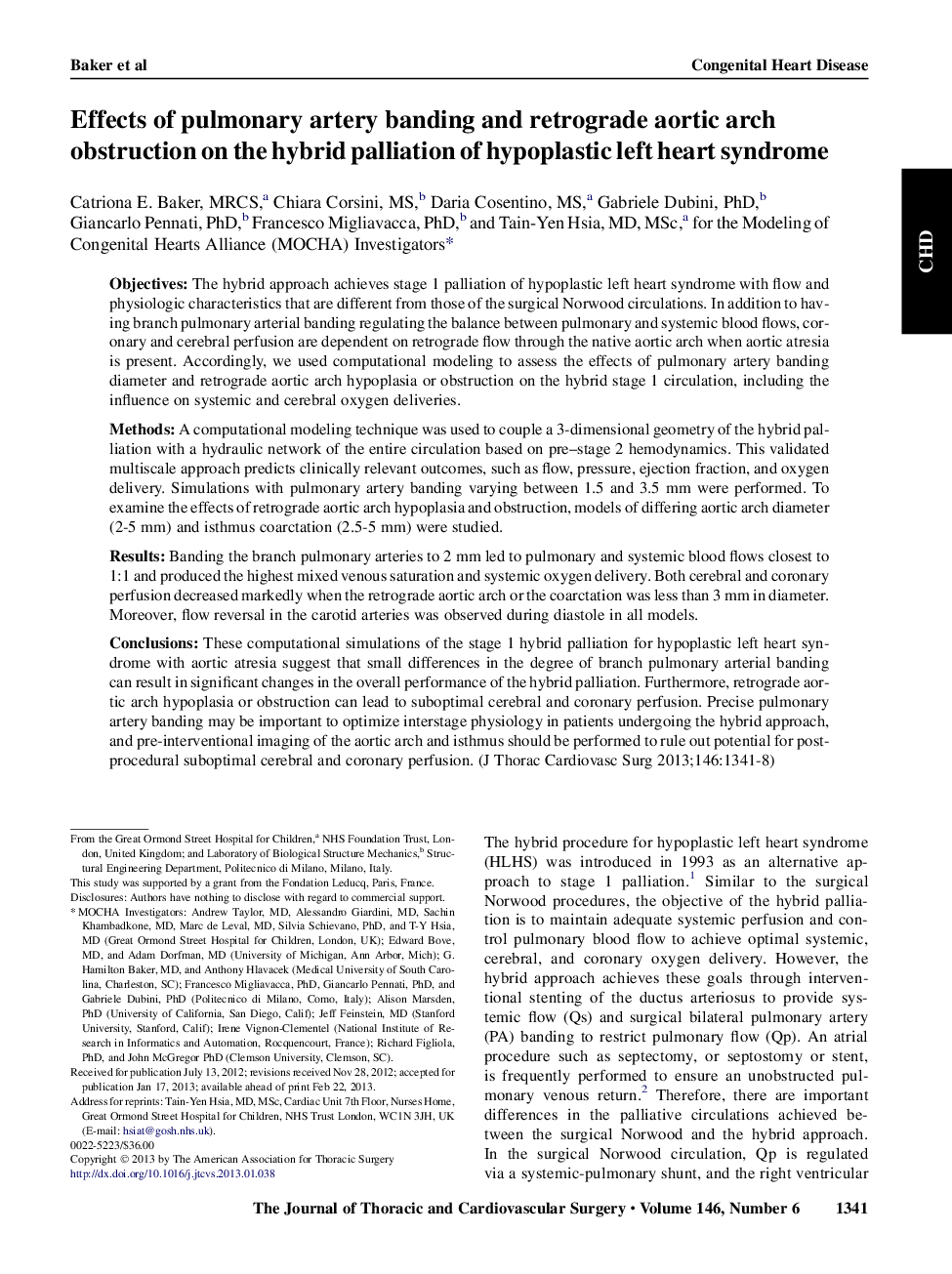| کد مقاله | کد نشریه | سال انتشار | مقاله انگلیسی | نسخه تمام متن |
|---|---|---|---|---|
| 2980833 | 1578616 | 2013 | 8 صفحه PDF | دانلود رایگان |

ObjectivesThe hybrid approach achieves stage 1 palliation of hypoplastic left heart syndrome with flow and physiologic characteristics that are different from those of the surgical Norwood circulations. In addition to having branch pulmonary arterial banding regulating the balance between pulmonary and systemic blood flows, coronary and cerebral perfusion are dependent on retrograde flow through the native aortic arch when aortic atresia is present. Accordingly, we used computational modeling to assess the effects of pulmonary artery banding diameter and retrograde aortic arch hypoplasia or obstruction on the hybrid stage 1 circulation, including the influence on systemic and cerebral oxygen deliveries.MethodsA computational modeling technique was used to couple a 3-dimensional geometry of the hybrid palliation with a hydraulic network of the entire circulation based on pre–stage 2 hemodynamics. This validated multiscale approach predicts clinically relevant outcomes, such as flow, pressure, ejection fraction, and oxygen delivery. Simulations with pulmonary artery banding varying between 1.5 and 3.5 mm were performed. To examine the effects of retrograde aortic arch hypoplasia and obstruction, models of differing aortic arch diameter (2-5 mm) and isthmus coarctation (2.5-5 mm) were studied.ResultsBanding the branch pulmonary arteries to 2 mm led to pulmonary and systemic blood flows closest to 1:1 and produced the highest mixed venous saturation and systemic oxygen delivery. Both cerebral and coronary perfusion decreased markedly when the retrograde aortic arch or the coarctation was less than 3 mm in diameter. Moreover, flow reversal in the carotid arteries was observed during diastole in all models.ConclusionsThese computational simulations of the stage 1 hybrid palliation for hypoplastic left heart syndrome with aortic atresia suggest that small differences in the degree of branch pulmonary arterial banding can result in significant changes in the overall performance of the hybrid palliation. Furthermore, retrograde aortic arch hypoplasia or obstruction can lead to suboptimal cerebral and coronary perfusion. Precise pulmonary artery banding may be important to optimize interstage physiology in patients undergoing the hybrid approach, and pre-interventional imaging of the aortic arch and isthmus should be performed to rule out potential for post-procedural suboptimal cerebral and coronary perfusion.
Journal: The Journal of Thoracic and Cardiovascular Surgery - Volume 146, Issue 6, December 2013, Pages 1341–1348